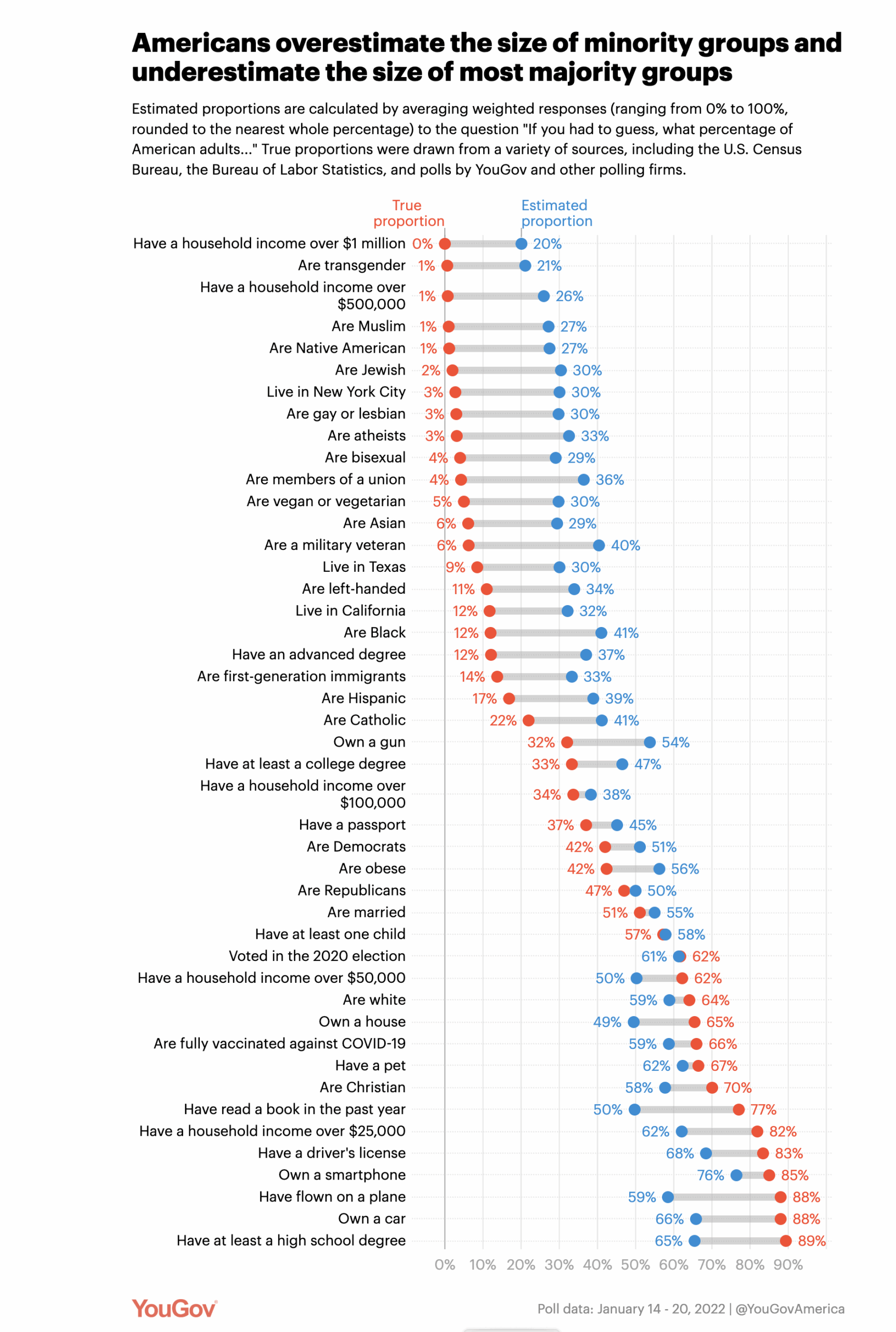Estimating rare proportions
There is a statistic circulating on social media claiming that the average person in the USA thinks 21% of the population is transgender. Obviously this isn’t true (both obviously it isn’t 21% and obviously that isn’t what the average person believes). It’s similar in some ways to the claim that some Americans think Iran is in the middle of the Atlantic Ocean, which I’ve dealt with before, except that estimating small proportions is an extensively studied problem in psychology, so a lot is known about the biases. In fact, if you look at the original source for the claim, demonstrating this phenomenon was the actual point of the story.

As Danielle Navarro explains, all small proportions are overestimated and all large proportions underestimated when people aren’t certain of the true value. This is an extremely consistent phenomenon, to the extent that we can actually say Americans are better informed about the proportion of transgender people than they are about other comparably extreme proportions.
[Update: Andrew Gelman writes about a slightly different, but related phenomenon, in the context of people reporting having been present for mass shootings. It’s slightly different because people are reporting their own experience, which they presumptively do know, rather than their estimates of some proportion they have no way of knowing. We’d expect the bias to be smaller in this setting, but to still be present — it’s like the estimate of the frequency of virgin birth from the National Longitudinal Study of Youth]
Thomas Lumley (@tslumley) is Professor of Biostatistics at the University of Auckland. His research interests include semiparametric models, survey sampling, statistical computing, foundations of statistics, and whatever methodological problems his medical collaborators come up with. He also blogs at Biased and Inefficient See all posts by Thomas Lumley »